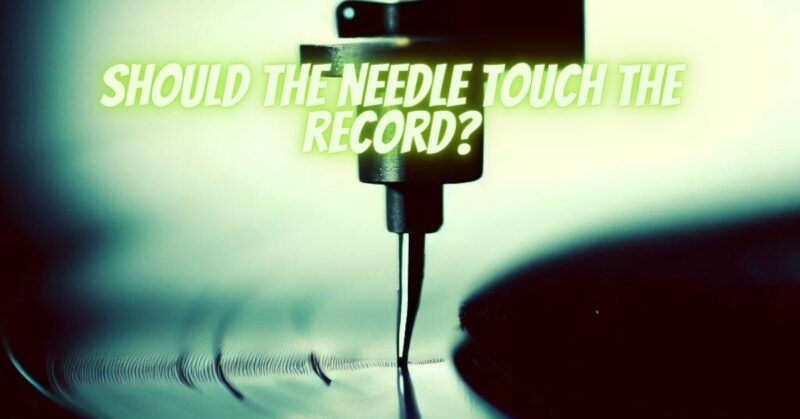Vinyl records offer a timeless and captivating listening experience, but handling and maintaining them properly is paramount to preserving their quality. A common question that arises is: Should the stylus make contact with the record surface? In this article, we’ll delve into the significance of stylus contact, the implications of incorrect alignment, and best practices for ensuring optimal sound quality and record longevity.
The Role of Stylus Contact
- Essential Contact:
The stylus, also known as the needle, is the interface between the record grooves and your audio system. Proper contact is essential for translating the physical grooves into electrical signals that produce sound.
- Tracking and Playback:
The stylus follows the contours of the record grooves, tracking the micro-variations in the groove wall. These movements generate electrical signals that are then amplified and reproduced as music through speakers.
- Optimal Alignment:
Achieving proper stylus alignment ensures accurate tracking, minimal wear on the stylus and the record, and optimal sound reproduction. Misalignment can lead to distortion, excessive wear, and compromised sound quality.
Implications of Incorrect Alignment
- Groove Damage:
Incorrect stylus alignment, such as using too heavy a tracking force or improper cartridge alignment, can damage the grooves over time. This not only degrades sound quality but also reduces the lifespan of the record.
- Distortion and Fidelity Loss:
Poor stylus contact or alignment can result in distortion, sibilance, and inaccuracies in sound reproduction. The subtle details and nuances of the music may be lost or altered.
Best Practices for Stylus Contact
- Proper Tracking Force:
Adjust the tracking force according to the manufacturer’s recommendations for your cartridge. Too little tracking force can cause skipping, while too much can damage the stylus and grooves.
- Correct Cartridge Alignment:
Use a protractor or alignment tool to ensure that your cartridge is aligned parallel to the record grooves. Proper alignment minimizes tracking error and optimizes sound quality.
- Vertical Tracking Angle (VTA):
Some turntables allow adjustment of the VTA, which affects the angle at which the stylus contacts the grooves. Optimal VTA can contribute to improved sound quality.
- Regular Stylus Inspection:
Periodically inspect the stylus for signs of wear, damage, or accumulated debris. Clean the stylus gently with a stylus brush or specialized solution to maintain optimal performance.
- Avoid Lateral Pressure:
Avoid applying excessive lateral pressure or skewing the stylus during playback, as this can lead to uneven wear and damage.
The question of whether the stylus should make proper contact with the record surface has a clear answer: yes, proper contact is crucial for accurate sound reproduction and the preservation of both your records and stylus. By adhering to proper alignment, tracking force, and maintenance practices, you can ensure that your vinyl listening experience remains as immersive and authentic as intended. Remember, the alignment and care you invest in your stylus and records will be reflected in the rich and captivating sound that vinyl enthusiasts cherish.


